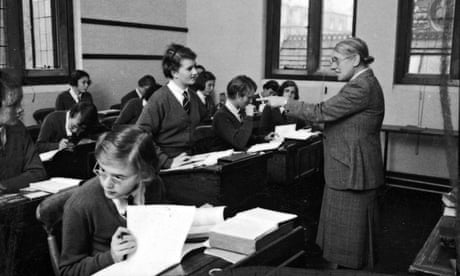 If you've been following these posts, you'll have picked up the theme of pupil ownership. I think this is important. The model of a teacher-driven, teacher-centred classroom is outmoded.
If you've been following these posts, you'll have picked up the theme of pupil ownership. I think this is important. The model of a teacher-driven, teacher-centred classroom is outmoded. The future is uncertain, the skills that pupils will require when they leave school are unknown: of the seven- or eight-year olds you teach next week, many will leave the school system in 2024. This is a sci-fi year. Children won't know what 'driving' means or 'handwriting' or 'shopping trolley'. We don't know precisely what skills young people will need, but we do know that they'll either need to work things out for themselves/make informed decisions/evaluate what they've done, or that we should equip them with the capacity to self-manage, self-assess and self-evaluate.
The future is uncertain, the skills that pupils will require when they leave school are unknown: of the seven- or eight-year olds you teach next week, many will leave the school system in 2024. This is a sci-fi year. Children won't know what 'driving' means or 'handwriting' or 'shopping trolley'. We don't know precisely what skills young people will need, but we do know that they'll either need to work things out for themselves/make informed decisions/evaluate what they've done, or that we should equip them with the capacity to self-manage, self-assess and self-evaluate.
And if developing pupil independence isn't a substantial enough carrot, the Teachers' Standards require that pupils are guided to reflect on the progress they have made and their emerging
needs and encouraged to take a responsible and conscientious attitude to their
own work and study.
How could you go about this with the children in your class this week? You could start by auditing your current practice. To the right are some questions you could ask yourself. Inclusion of any these elements would indicate a degree of pupil ownership. (Just to acknowledge the possibility of some of these elements would be a starting point.) But if pupil ownership is part of your classroom climate then these elements are not bolt-ons. This way of thinking should become integral to your practice.
To get pupil ownership up and running, identify some gaps and start putting some steps in place. For example, at the start of a new topic (or theme or unit) ensure there's sufficient space (time, opportunity) for pupils to identify what they already know and the skills/knowledge they'd like in place by the end of the topic. This is curriculum design and that's your first lesson of a new unit planned (in skeleton form). There's an example of the left of doing this using a KWL grid and an iPad.
When reporting back, pupils could decide the method or tool to use - poster, presentation, video, podcast. Remember: this is the 21st century - why do pupils need to write sentences about what they've learnt? Ensure there's sufficient space for pupils to assess what they've done - encourage them to assess thoughtfully, to be critical friends. Self-assessment isn't just about colouring in a set of traffic lights or raising a thumb (although this is a start): it's about equipping children to make informed judgements about the progress they've made.
How could you go about this with the children in your class this week? You could start by auditing your current practice. To the right are some questions you could ask yourself. Inclusion of any these elements would indicate a degree of pupil ownership. (Just to acknowledge the possibility of some of these elements would be a starting point.) But if pupil ownership is part of your classroom climate then these elements are not bolt-ons. This way of thinking should become integral to your practice.
To get pupil ownership up and running, identify some gaps and start putting some steps in place. For example, at the start of a new topic (or theme or unit) ensure there's sufficient space (time, opportunity) for pupils to identify what they already know and the skills/knowledge they'd like in place by the end of the topic. This is curriculum design and that's your first lesson of a new unit planned (in skeleton form). There's an example of the left of doing this using a KWL grid and an iPad.
When reporting back, pupils could decide the method or tool to use - poster, presentation, video, podcast. Remember: this is the 21st century - why do pupils need to write sentences about what they've learnt? Ensure there's sufficient space for pupils to assess what they've done - encourage them to assess thoughtfully, to be critical friends. Self-assessment isn't just about colouring in a set of traffic lights or raising a thumb (although this is a start): it's about equipping children to make informed judgements about the progress they've made.


No comments:
Post a Comment